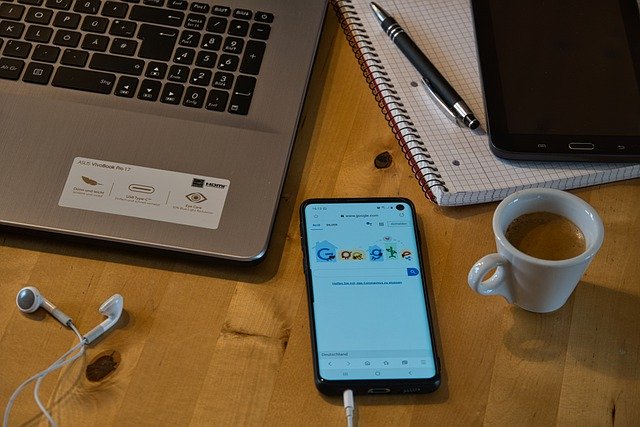Martin Brensilver, meditation teacher at UCLA, provides a guided meditation podcast on Equanimity as a Facet of Mindfulness. In the process he explores the nature of equanimity and argues that it is not the same as passivity – it is not inaction or indifference in the face of human suffering in the world. For Martin, equanimity involves “having a relationship with one’s deep sensory experience right now” – engaging with our deepest thoughts and feelings in the moment. It involves being open to the full poignancy of the human condition – not deadening our experience of life but drawing out the sadness and melodrama of the human condition. Mindfulness enables us to meet this intensity with “patience, love and tolerance” and a “soft heart”.
Martin stresses that equanimity is a fine balance between suppression of what we are feeling and thinking and becoming totally caught up in those thoughts and feelings. Equanimity involves being fully present to our bodily sensations and open to fully experiencing our challenging emotions. What equanimity brings to our lives is the capacity to overcome the “compulsion to act out our preferences” – the temptation to succumb to our habituated responses in the face of challenging thoughts and emotions.
Martin observes that there are times when meditation is “not fun at all”. To be silent and still, in whatever posture we adopt, can unearth strong emotions and racing thoughts. It can be a catalyst for uncomfortable bodily sensations. What it does, however, is “open our hearts to ourselves” and what we are experiencing.
The fragility of the human condition
Martin gave a talk in May 2020 as part of a retreat for Buddhist practitioners. The podcast of the talk is titled, Vulnerability, Porousness, Equanimity, and Love. The talk is fairly conceptual and focuses on the difference between classical Buddhist thinking on vulnerability versus modern-day Buddhist thinking. However, Martin makes a number of points relevant to our discussion about the human condition by drawing on the work of several authors.
One of these writers is Adam Phillips, author of Missing Out: In Praise of the Unlived Life. Adam suggests that we long for a different life from what we are experiencing. We can become focused on “needs unmet”, “desires unfulfilled” and “roads not taken” – effectively “falling short” of our potential. These are the “lives unlived” that we imagine could have been possible and this can lead to a sense of unrest and even “rage”.
Martin compares the human condition to that of the fragility of a plant and contrasts it to the solidity of a jewel. He refers to Susan David’s comment that “life’s beauty is inseparable from its fragility”. In her book, Emotional Agility, Susan asserts that life involves sadness, fragility and anxiety and we need to acknowledge this, but to live our life more fully requires the courage to go beyond our comfort zone and manage our fear about uncertainty and ambiguity.
Martin asserts that the pandemic has highlighted the downside of interdependence as well as the upside. He suggests that we have been experiencing the “porousness of the boundary between self and world” – the pandemic has injected itself into millions of lives in numerous countries so that we are conscious that we are “living in precariousness”, we cannot ignore the fragility of the human condition. Martin reaffirms Susan’s contention that failure to accept this vulnerability is a “major source of inhumanity” – the harmful withholding of care, concern and compassion. He maintains that, in contrast, embracing vulnerability fully, (and with It, the possibility of rejection) leads to softening the heart and opening to patience, tolerance and care.
Developing equanimity
Martin draws on the work of Sara Lazar, a scientist researching meditation and yoga. Sara and her colleagues in a joint research paper define equanimity as “an even-minded state” or an even disposition towards all experiences no matter their source or how they are experienced (e.g., pleasant or unpleasant).
Martin summarises Sara’s thoughts about developing the key aspects of equanimity as follows:
- Widen our perspective – when we are in pain or feel vulnerable (e.g. because of the pandemic), our focus narrows and we can easily lose perspective. Martin suggests that one way to widen our perspective is to envisage the vastness of space or the time the light from stars take to journey to us. We could also envisage the earth in space and billions of people living in diverse countries, timeframes and cultures.
- More readily engage in sensory experience – as suggested earlier, this means not denying experience or associated emotions but embracing them fully. If we can accept not suppress what we are experiencing then we are better able to ride out the “the winds of feelings”, rather than tightly bracing against them. This principle is captured in a very practical way by Jon Kabat-Zinn in his book, Full Catastrophe Living: How to cope with stress, pain and illness using Mindfulness Meditation.
- Disengage from evaluative (judgemental) thinking and reactive behaviour – we have to overcome the unevenness of our response to challenging emotions and events conditioned by our habituated behaviour. This takes a quiet confidence that is born of courage and self-awareness. Despite our best efforts, our equanimity can ebb and flow but as we work with our deepest emotions we can widen our window of tolerance so that we are “not afraid to be overrun by experience”.
Reflection
Martin reinforces the fact that equanimity is not a steady state – it can have its ups and downs. As we grow in mindfulness through meditation and reflection, we can develop this “even-minded state” and ready disposition towards the challenging experiences and emotions of our life. We can become increasingly self-aware and learn to overcome our reactivity and learned responses to stressors.
Increasingly, we can build what Martin describes as “courageous confidence” – a healthy confidence not born of conceit but deeply embedded in consciousness of the fragility of the human condition. We can progressively move away from acquisitiveness and self-absorption to care and compassionate action for others who together with us are experiencing life’s frailties, uncertainties and challenges.
_______________________________________
Image by Anant Sharma from Pixabay
By Ron Passfield – Copyright (Creative Commons license, Attribution–Non Commercial–No Derivatives)
Disclosure: If you purchase a product through this site, I may earn a commission which will help to pay for the site, the associated Meetup group, and the resources to support the blog.









